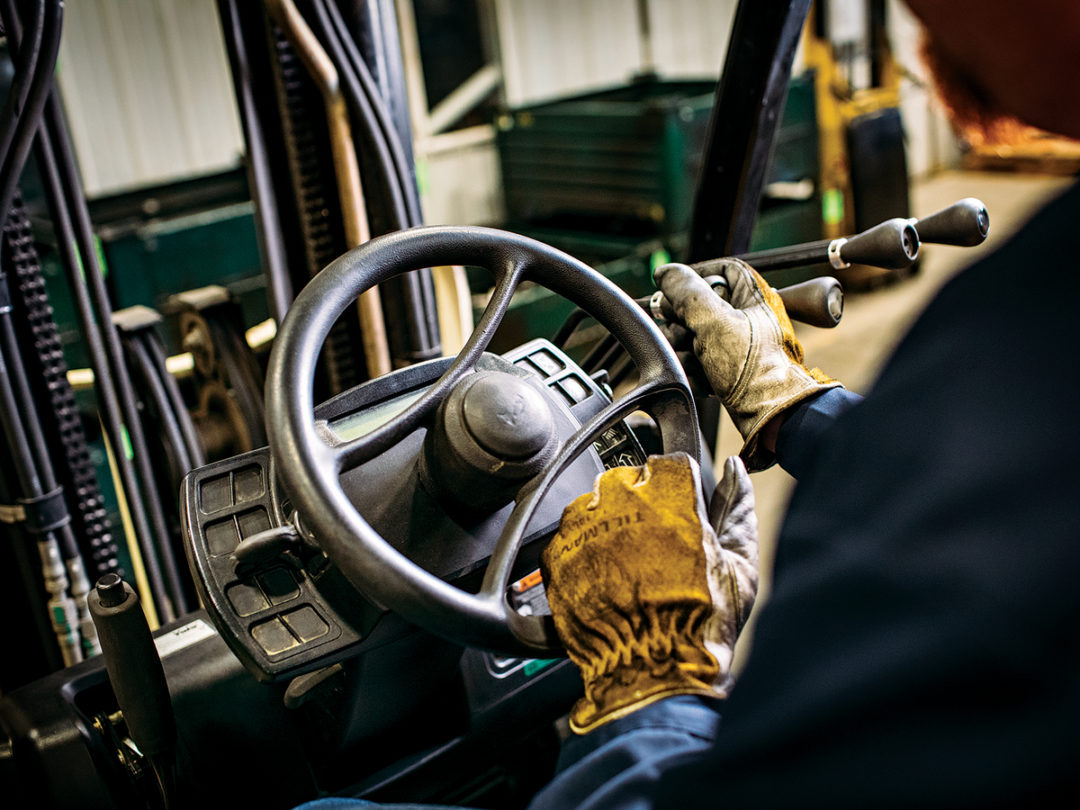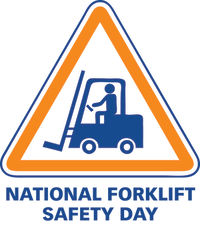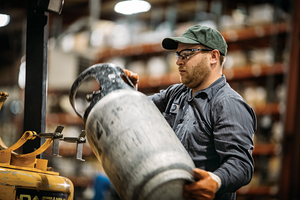Your forklift safety questions, answered
Follow these recommendations on proper safety procedures to help ensure a safe, productive workplace.

 Forklifts and other types of heavy material handling equipment are essential to the success of many logistics, distribution, and supply chain operations. But they also introduce workplace hazards like collisions, tip-overs, and “struck-by” conditions, which is why it’s important for employees to follow proper safety measures at all times. Employees in those operations know that staying safe on the job is even more important than staying productive.
Forklifts and other types of heavy material handling equipment are essential to the success of many logistics, distribution, and supply chain operations. But they also introduce workplace hazards like collisions, tip-overs, and “struck-by” conditions, which is why it’s important for employees to follow proper safety measures at all times. Employees in those operations know that staying safe on the job is even more important than staying productive.
While some safety tips may seem obvious, it’s the small details that go a long way in keeping employees safe throughout a shift. Here are a few common safety-related questions, along with answers that will provide crews with important safety tips and insights on how propane-powered equipment can enhance workplace safety:
Q: What are some basic forklift safety practices that tend to get overlooked?
- Complete a routine equipment check before operating. Any damage or problems should be reported to management, and the forklift should not be operated if it needs to be repaired.
- Wear appropriate personal protective equipment (PPE). Hard hats, protective footwear, high-visibility clothing, and other PPE, as provided by the employer, are recommended when working around forklifts.
- Buckle up. Overturned forklifts are a leading cause of forklift-related injuries and fatalities. By buckling up while in a sit-down forklift, operators can save themselves from getting crushed by the machine’s overhead guard or roll cage in the event of an accident.
- Don’t surpass a forklift’s weight capacity. By keeping loads within the weight capacity, operators can reduce the risk of tipping the machine.
- Operate at a safe speed, use the horn when needed, and use caution on grades or ramps. Forklift operators should sound their horn in locations where vision is obstructed to help alert pedestrians or other operators and avoid collisions. Operators should also take corners and turns slowly to minimize the risk of tipping.
- When finished operating, park safely. Set the parking brake, lower the forks, and set the controls to neutral. Safely parked machines reduce the risk of unintended movement when a forklift is left unattended. If the vehicle is parked on an incline, employees can further secure the forklift with wheel blocks.
More than 90% of Class 4 and 5 forklift operators are using propane forklifts, according to data from the Propane Education & Research Council, making the following propane-specific safety tips important for a wide range of facilities.
Q: What safety measures should employees remember every time they operate propane-powered equipment?
- Inspect propane cylinders prior to operation. Check cylinders for rust, dents, gouges, and leaks. Cylinders that show signs of wear or leaks shouldn’t be used and may need to be replaced, even if they’re within the cylinder’s requalification date.
- Ensure the pressure-relief valve on the propane cylinder is secure and points away from the locating pin. Operators should check that the pressure-relief valve fitting is roughly 180 degrees from the forklift’s locating pin.
- Close the service valves on cylinders when not in use. This helps prevent potential injury around internal combustion engines and unintended fuel loss.
- Store propane cylinders in a secure rack or cage. These are generally located away from exits, stairways, entryways, and high-traffic areas. The cylinders can be stored horizontally with the pressure-relief valves in the uppermost position. Operators should use proper lifting techniques when removing cylinders from storage and placing them onto a forklift.
 Q: What role does a local propane supplier play in forklift safety?
Q: What role does a local propane supplier play in forklift safety?
The propane industry has dedicated procedures to support the safety of businesses that operate with propane, including local propane suppliers. Local suppliers can help customers with:
- Cylinders: Propane suppliers inspect cylinders each time they’re exchanged and remove damaged cylinders from service. They can also repair and replace worn valves and O-rings on the cylinders as needed and help identify the most convenient location for cylinder cages so they don’t interfere with workflows.
- Refueling: A propane supplier’s priority is making sure crews understand how to properly and safely install propane cylinders on their forklifts. Businesses can also opt for a cylinder-exchange program, where their propane supplier conveniently refills the cylinders for them.
- Training: Some propane suppliers offer additional safety training opportunities for forklift customers.
To learn more about propane forklift safety, visit Propane.com/SafetyFirst.
Related Articles

Jeremy Wishart is director of off-road business development for the Propane Education & Research Council. He can be reached at jeremy.wishart@propane.com.
Copyright ©2024. All Rights ReservedDesign, CMS, Hosting & Web Development :: ePublishing